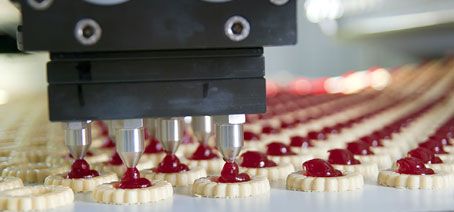We use rigorous testing to optimise the beer head
Yes, it’s true! We are actually that geeky when it comes to developing lubricants for the brewing industry. In beer production, there’s always a small risk that tiny amounts of lubricant end up in the beverage, for instance when sealing the cans, or in the mixer if the gearbox is placed above the tank. Even though we’re only talking about the tiniest of amounts, it is crucial that beer brewers always use lubricants that are approved for contact with foods.
IT’S NOT JUST ABOUT SAFETY
It is of course no great surprise to most of us that any production process in the food industry has to be absolutely safe. Hazardous contaminants must simply not occur. What not many people know is that choosing the right lubricant is about far more than just food safety. For instance, it can even affect the experience of drinking a glass of beer.
Even food grade lubricants can affect the head on a beer when you pour it. We therefore conduct rigorous foam tests when developing lubricants for beer production. The head should not sink or ‘decay’ too quickly, so we test the foam’s stability. Of course not everyone is such a geek about this, but we love beer, and compromising on the head is simply not something we do. If you’re also a beer lover, you’ll know where we’re coming from.
HOW IT WORKS
To measure foam stability, we first need a reference sample to act as a base, i.e. a beer that has the optimum foam head and is guaranteed not to be contaminated. In our test vessels we add grease or oil in concentrates of 1, 10 or 100 ppm in each test. The foam is built up in the beer with nitrogen according to a specified method. Next, it’s time to measure the time it takes for the head to decay. The benchmark for foam stability is based on the original height of the reference sample – and we measure how many seconds it takes for the foam to reduce to half the reference sample’s original height.
| Half-life-time of the foam in sec | Classification of foam stability |
|---|---|
| 480-400 | GOOD |
| 400-320 | MODERATE |
| <320 | WEAK |
| Beer foam Stability (Method According to Rudin) | |
So how long does it take for a beer foam to decay? A decay time of under 320 seconds is classed as Weak, 320–400 seconds is Moderate, and a head that takes 400–480 seconds to decay is classed as Good. At FUCHS the highest level, Good, is the only grade we accept as the crowning glory.
INTERESTED IN FINDING OUT MORE?
You can read more about our special application lubricants here, specially designed to meet the food industry’s very high demands on safety and other important aspects. And of course you are always welcome to contact us. If you would like more information about our range that’s specifically developed for the beverage and brewing industry, please download our PDF here.


